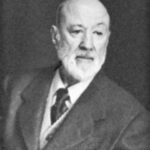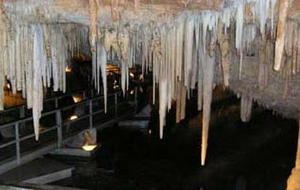The Hot Zone, by Richard Preston, is a true story about a set of events from 1980 through 1993. The events involved the breakout of Marburg and Ebola filoviruses and how the scientists involved dealt with the threat.
The book starts in 1980 when Charles Monet is living around Mt. Elgon. He is a loner and a womanizer and spends most of his time traveling around that area when he isn’t working. He works at the pump house at the sugar factory within near the base of Mt. Elgon. On one trip he goes to Kitum Cave with a female friend. It is in the cave on new-years day, 1980, that he contracted Marburg. By January 8th he has a severe headache, the first symptoms. Three days later he starts vomiting, his eyes become red, his face starts to droop, his skin begins turning a yellowish color, and he develops little red star-shaped specs all over his body. One of his co-workers stops by to check on him since he hasn’t shown up for work and takes him to a hospital in Kisumu by lake Victoria. The doctors at Kisumu decide that he should go to Nairobi Hospital in East Africa so he boards an aircraft and ends up bleeding and puking blood and black stuff the whole way there. The red starlike shapes have turned into purple bruises and the skin on his face is starting to droop more as it separates from his face. When the aircraft arrives he stumbles off and gets in a taxi headed for the Nairobi hospital. After he arrives he is left in the waiting room and this is when he “crashes”, or “bleeds out”. He loses consciousness, vomits blood all over the floor, his bowels release and parts of his intestines flood out in a mess of blood and black particles. Dr. Shem Musoke was the doctor that treated Charles Monet. He is also the Doctor from whom the scientists later get the tissue samples of the disease. The samples of Dr. Musoke were sent to the C.D.C. in the US and to the National Institute of Virology in South Africa.
The main characters are Major Nancy Jaax and her husband Major Gerald Jaax. They are both military veterinarians and have lots of experience with animal pathology and testing. Major Nancy Jaax’s specialty is in Bio-safety Level 4 Hot agents and she works at USAMRIID or the United States Army Medical Research Institute of Infectious Diseases in Fredrick, Maryland. Another major player in the story is Eugene (Gene) Johnson. He runs the Ebola research project at USAMRIID. He is the one with whom Nancy Jaax works on a daily basis. He was the person who discovered Ebola Sudan and is the one who is in charge of the Reston, Virginia Ebola outbreak that is the focus of the story.
In Reston, Virginia, there is a company that buys large quantities of monkeys for animal testing purposes. One particular shipment they received from the Phillipines in October of 1989 started to get sick and die very quickly. Dan Dalgard was the monkeys care taker and he sent pieces of the monkeys to USAMRIID. Upon testing, Peter Jahrling of USAMRIID discovered that what was killing the monkeys was Ebola. The book is about what happened after the discovery. There were quarrels between the C.D.C. and the Army about who would take control of the situation and who was responsible if things went wrong. They settled on the C.D.C. taking charge of human Ebola patients and the Army taking control of the infected monkeys. In the end the Army ended up killing all of the monkeys, over 450, and “nuking” or chemically treating the entire building to kill everything living in order to contain and destroy the virus. Four people actually contracted the Ebola virus but luckily for them it was a strain that was unable to harm humans. The original virus, Marburg, they believe has been traced back to Kitum cave in Kenya although they are unable to find any trace of the filovirus inside the cave.
A filovirus is a member of the Filoviridae family of viruses and is of the order mononegavirules. The viruses are built as a single stranded negative sense RNA and they only affect primates. This is the primary reason why there was such a scare with them in the book. We are considered primates and there is a very good chance that viruses that affect monkeys will be able to affect us. The viruses cause horrible fevers and hemorrhaging throughout the body. Eventually 50-90% of the people (depending on the type of virus) who contract this type of virus bleed without being able to clot, their internal organs liquefy and they eventually crash and bleed out violently. The Filoviruses are classified by the C.D.C. and biosafety Level 4 agents meaning that they require the highest level safety precautions when handling.
Biosafety Level 4 environments are used in the book. Biosafety level 4 areas are the strongest level of precaution against the worst of the worst biological threats. In a biosafety level 4 area the staff have to be specially trained in procedures for handling the worst and most contagious diseases and viruses as well as the protocols for infection or breach of their equipment. They wear multiples layers of protective clothing as well as thicker gloves and boots inside the lab. They have special suits that are sealed air-tight and they use tape around all exposed seams. The suits also have their air supply coming in externally through ports so that the pressure inside the suit is greater than that of the room. That way if there is a puncture then the air will flow outwards and keep out the virus. The air inside the laboratory is kept at a negative pressure as well. This means that if there were to be an opening directly into the room that the air would flow into the room like a vacuum and prevent virus particles from escaping the room. To enter a level 4 area you must be decontaminated. This process is a shower of chemicals that kills everything on the outside of the suit and takes about 7 minutes according to the book.
There were many examples in the book of how the scientific method was used apart from the biosafety level 4 containment procedures. On page 25 Dr. Musoke witnessed symptoms (observation) in Mr. Monet that he did not understand. He made a hypothesis in his mind about what he thought was wrong with the patient such as the flu or possibly just a common cold. He then treated the symptoms (testing hypothesis) and waited to see if the patient got better. Of course, Mr. Monet only got worse so Dr. Musoke had to try other methods (more testing). Unfortunately none of the ones at his disposal worked and Dr. Musoke was infected with Marburg because he did not have the equipment or the experience to deal with a filovirus and ended up dying from the virus.
A filovirus was also in the monkeys that were shipped to Reston and Mr. Dalgard starting on page 166. He had to try and use the scientific method to figure out what was wrong with them. At first he just waited to see if any more got infected and they did (observation). He then hypothesized that they had SHF and sent samples away to get more information about what might have been infecting them, meanwhile more monkeys were dying. Unfortunately he did not follow very good lab procedure because he assumed that the samples would be SHF and sent the samples in tin foil without any plastic so when they got to the lab they were thawed out and dripping fluids everywhere at USAMRIID (testing phase). It was an accident that they discovered Ebola in the monkeys. If Dalgard hadn’t sent those samples when he did and if the starin of Ebola had been one that affects humans then we would have had a huge outbreak and lots of people infected. When Dalgard received a partial confirmation (results) that the monkeys might indeed have SHF (Simian Hemhorragic Fever) it was too late for most of the monkeys because they had also started dying in another room down the hall so he knew that the disease was contagious. Upon later confirmation of Ebola (more testing and results) he did shut the whole place down in order to try and contain the virus although he should have also kept the humans away from the monkeys. If the Ebola strain had been able to infect and harm humans then the whole Washington D.C. area would have been infected.
Peter Jahrling and Tom Geisbert should have died from the Ebola strain if it had been transferrable to humans. They violated the biosafety level three procedures because of their experimental bias that the disease was only harmful to monkeys. They actually sniffed a sample of the disease; sucked it right into their lungs on page 185. I am so thankful that the virus was not able to spread to humans. I read the book as a novel and it did not him home that this was real until I started looking at some of the real pics on the website. I am glad that we the public are not notified about every threat as it progresses. It is totally understandable that the government did not inform the public about the possibility of Ebola getting out. People would have panicked and run away and possibly spread the disease faster than ever. By controlling who knew about the disease they were able to hunt down the infected people much easier and to give them care and isolate them so that the disease would not be spread out of control.
The book did a good job of portraying the scientists as real people with real feelings and families. Nancy and Gerald Jaax seem like gifted people who have a heart for animals and for their work. They have a couple of kids who have no idea the level of danger their parents are in on a daily basis and worry about their sports practice more than their parents. Of course, Nancy and Gerald’s jobs require them to spend a lot of time away from home so the kids don’t see them that often. Other scientists in the book such as Tom Geisbert and Peter Jahrling also seem very normal and not geeky or weird like many scientists are portrayed. Tom is a hunter and a fisherman and spends a lot of time outdoors when not in the lab. Peter Jahrling does a hazardous job but his neighbors would not know it. The book says he keeps his yard real neat and keeps a “nearly featurless life among suburban neighbors” (p. 174) and that none of them would know the dangerous work he does when he leaves that suburban neighborhood.
My favorite character in the book was Nancy Jaax. She is the main character and the book talks as much or more about her than any other character. I like her because she is committed to her work and does it as well as she can. She knows that what she does is important and isn’t afraid to take some risks in order to benefit her family and country. She has a heart for animals and part of her job is diagnosing and stopping the spread of infectious diseases among her patients. I like her stick-to-it-iveness and guts when it comes to standing up for what she believes in and getting the job done. She had a couple of scares in the story but she kept on doing her job until it was done even with the threat that she might get exposed to one of the worst viruses ever known to man.
I loved the book. That said, it was very graphic and I could have done with a little less detail although the details did make the account more real. It was really fun to get onto the authors web site and see some of the pictures that he took in Africa of Kitum Cave and of the Elephants in the cave scraping the rock with their tusks. I also looked at some pictures of Nancy and Gerald Jaax and the other doctors in the story. It really brings it home that the Reston incident really did happen and that we could have had a huge disaster on our hands if the Ebola strain was dangerous to humans. Let’s hope that people like the Jaax’s, Mr. Jahrling, Mr. Geisbert, and the other scientists who are in the field working to protect us from these nasty viruses will continue to get the funding and the resources they need to do their job!



